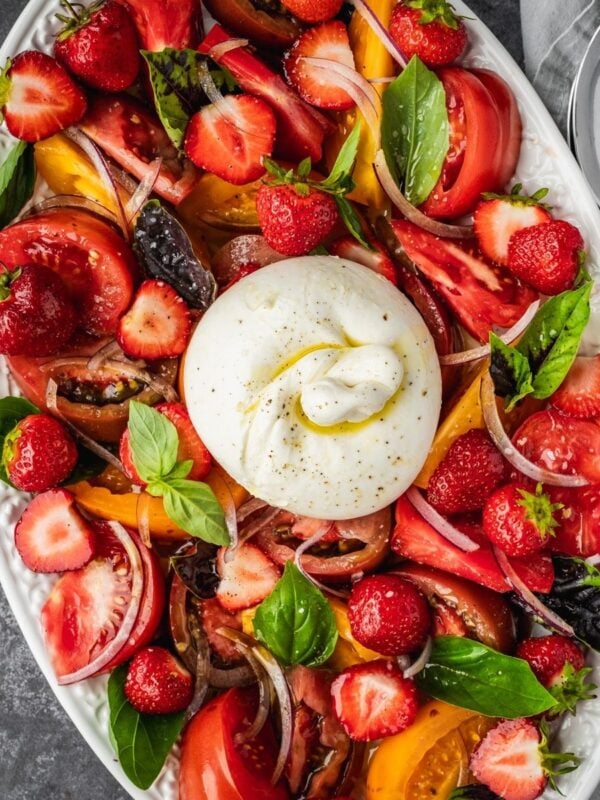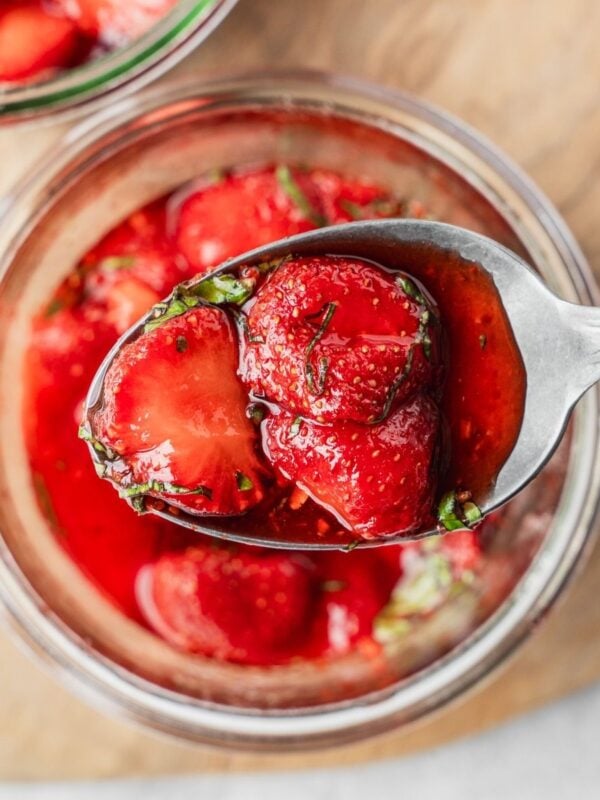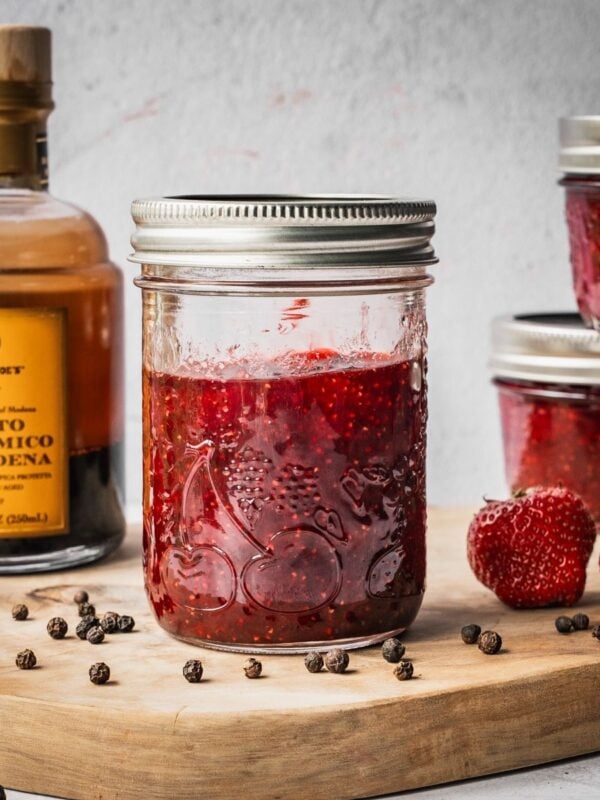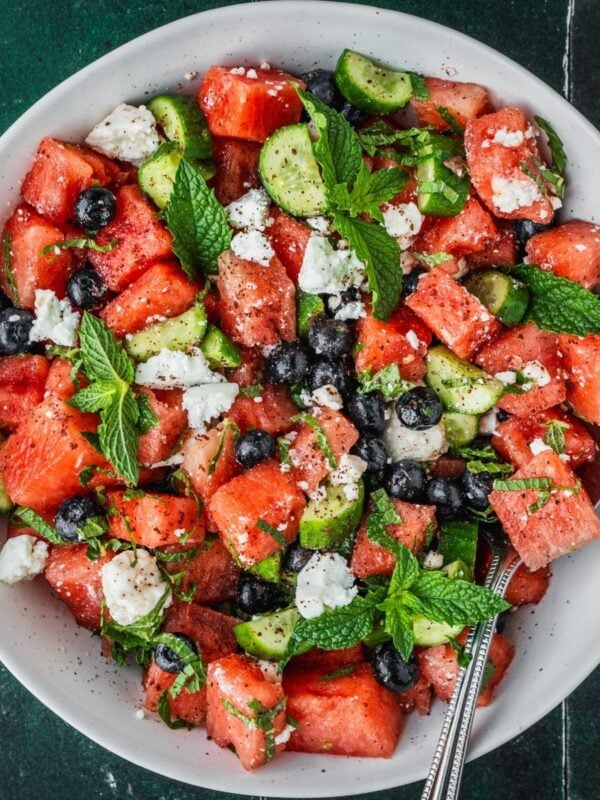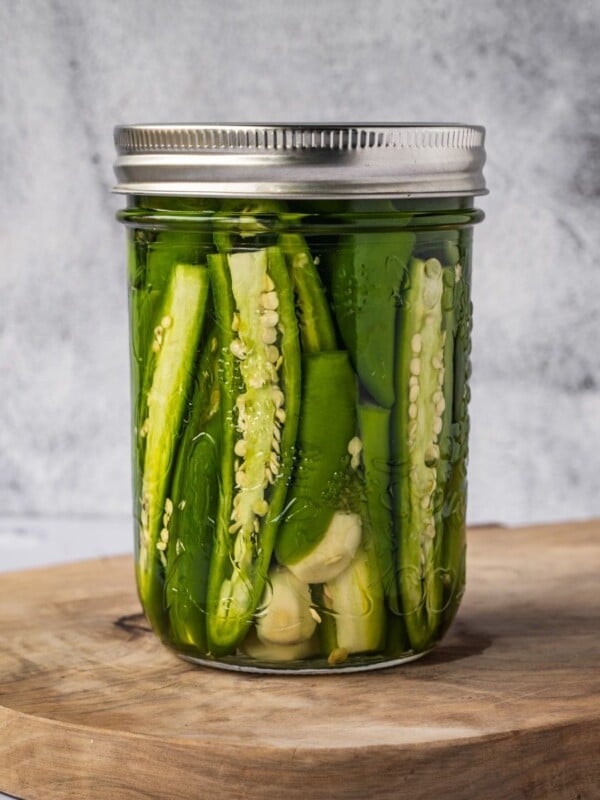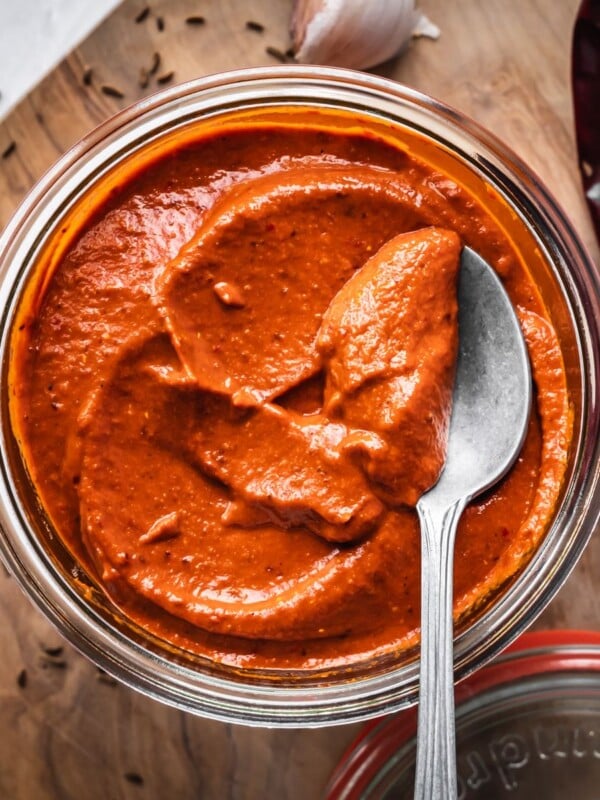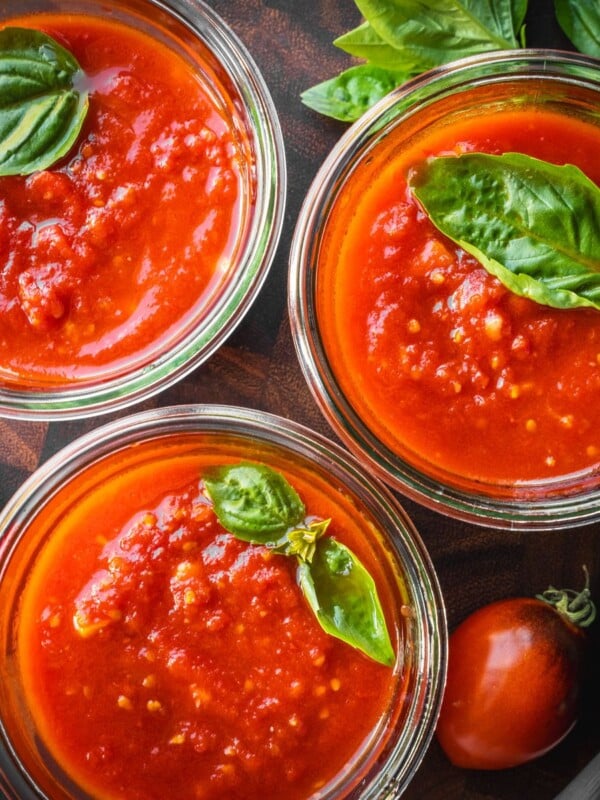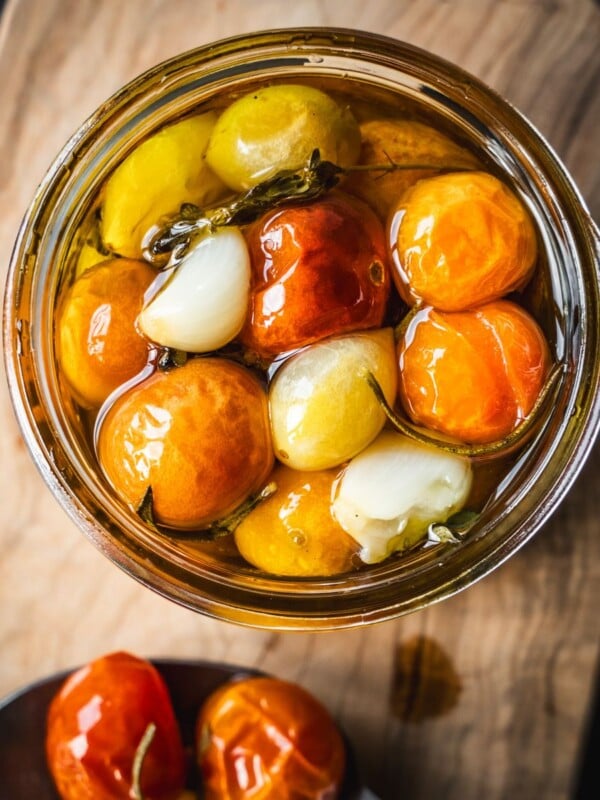If you’re a fan of pesto and looking to try something new, Ramp Pesto (Wild Leek Pesto) is a delicious and unique twist on the classic sauce. Made with foraged ramps, this flavorful pesto is easy to whip up and adds a burst of springtime freshness to any dish.

Table of Contents
What are Ramps?
Ramps (Allium tricoccum), also known as wild leeks are a type of wild edible green that is native to North America. They have a strong, pungent flavor that is similar to a combination of garlic and onion, and they are often used in cooking as a seasoning or ingredient in various dishes.
Wild ramps typically show up in early spring (usually late April or Early May) and can be found in wooded areas, particularly in the eastern United States and Canada. The leaves are long and flat, and the bulbous root is typically white or light pink in color. Ramp season lasts a few short weeks.
Ramps have gained popularity in recent years as a foraged food, and they are often featured on restaurant menus during the spring season.
These days, you may find them in a specialty grocery store or farmer’s market. If you find bunches of fresh ramps with the ramp bulbs attached (roots and all), consider trying to transplant the white bulb and its roots in a shady area of your garden.

Foraging and Sustainability Issues
While ramp foraging can be a fun and rewarding activity, there are some issues that need to be considered in order to ensure the sustainability of these wild plants. Some of the main issues around ramp foraging include:
- Overharvesting: Ramps are a slow-growing plant, and overharvesting can lead to depletion of the population. Foragers need to be careful to only take a small percentage of the available ramps in any given area, and to leave plenty of plants to continue growing and reproducing. A good rule of thumb is to harvest one leaf from a plant, allowing the rest of the plant to continue to grow.
- Habitat destruction: Ramps grow in wooded areas, and foragers need to be careful not to damage the habitat while harvesting. Trampling on the forest floor, digging up plants, or removing too much of the topsoil can all harm the ecosystem and make it harder for ramps to grow in the future.
- Competition with wildlife: Ramps are an important food source for many wild animals, including wild turkeys, deer and bears. Foragers need to be mindful of the impact that their harvesting may have on these animals, and may need to consider alternative food sources or harvesting techniques to minimize the impact on local wildlife.
- Cultural appropriation: Ramps have a long history of use in Native American and Appalachian cultures, and foragers need to be respectful of these traditions and avoid appropriating the plant or its uses without proper acknowledgment and respect.
By being mindful of these issues and taking steps to minimize their impact, ramp foragers can help to ensure the sustainability of these delicious and nutritious wild greens for generations to come.
Ingredients
The ingredients in this recipe are fridge and pantry staples, apart from the wild leeks of course.

Ingredient Notes and Substitutions
Though this wild ramp pesto recipe only has a few ingredients, you can certainly modify it slightly to suit your taste:
- Pine Nuts: Pine nuts can be expensive or hard to find, so feel free to substitute with walnuts, sunflower seeds or almonds.
- Extra Virgin Olive Oil: I recommend using your best olive oil. This recipe doesn’t work well with any other type of oil.
- Parmigiano Reggiano: You can certainly use another hard cheese like Pecorino for example. Since this recipe has very few ingredients, don’t use the shelf-stable “parm-like” powdered stuff. Use real deal parm. For a vegan ramp pesto, replace the cheese with a dairy-free hard vegan cheese or nutritional yeast.
- Ramp leaves: Well, this is a ramp pesto recipe! But if you don’t have ramps or they are not in season, check out my other traditional pesto recipes (Walnut Basil and Sicilian). My book, Seed to Table, includes a spring pesto recipe with mint and arugula as well as an autumn pesto recipe with kale and almonds.
See the recipe card for full information on ingredients and quantities.
Step by Step
Really, there isn’t much to this recipe. Stick everything (ramp greens, pine nuts, olive oil and cheese) in the bowl of a food processor and pulse to your desired consistency. Taste and adjust the seasoning with salt and black pepper to your liking. You can also use a mortar and pestle (see Expert Tips section below).


Make Ahead, Storage and Freezing
Storing fresh ramps is tricky. Too much moisture and they will soften and turn mushy. I like to wash them and dry them thoroughly. I then store them between paper towels and in a plastic bag in the fridge.
Like any other pesto, this recipe can be made a few days ahead of time. You may want to consider pouring a thin layer of oil over the pesto to reduce the chance of oxidation (browning). Store in an airtight container (preferably glass) for up to 4 days in the fridge.
For long-term storage, you can freeze extra pesto in ice cube trays. The frozen pesto cubes can then be transferred to a ziplock bag and stored in the freezer for 6. This is a great way to enjoy the garlicky flavor for months to come.
Expert Tips
- Use high-quality ingredients: The key to making great pesto is to use fresh, high-quality ingredients. Choose the freshest ramps you can find, and use good-quality olive oil, nuts, and cheese.
- Toast the nuts: To bring out the natural oils and flavors in the nuts, it’s a good idea to toast them before adding them to the pesto. Simply spread them out on a baking sheet and bake at 350°F for 5-10 minutes, until golden brown.
- Go old school: using a mortar and pestle to make the pesto is the traditional way. It takes longer but usually yields a better finished product.
- Blanche the ramps: This is optional, but blanching the ramps (boiling them briefly in a large pot of water and then plunging them into ice water) can help to mellow out their strong flavor and make them easier to blend into a smooth pesto. This will also help keep the bright green color. Make sure to squeeze out excess water.
- Experiment with different nuts and cheese: While pine nuts and Parmesan cheese are the classic ingredients in pesto, there’s no reason you can’t mix things up a bit. Try using different nuts, such as walnuts, almonds, or pistachios and different cheeses, such as pecorino or Asiago, to create unique flavor combinations.
- Taste and adjust as you go: The beauty of pesto is that it’s a forgiving recipe. You can adjust the ingredients to your liking as you go. Taste the pesto frequently as you blend it, and add more salt, lemon juice, or olive oil as needed.

Recipe FAQs
More and more markets are now offering specialty and foraged items. Ramps (wild leeks) can often by found in early spring at farmer’s markets or specialty grocery stores (like Whole Foods).
It is believed to be related to an old Scottish word “ramson” which was used to refer to wild garlic. The word “ramson” likely evolved from the Old English word “hramsa” which also meant wild garlic. Over time, the word “ramson” was Anglicized to “ramps” in parts of North America, especially in the Appalachian region where wild leeks are commonly found. Today, both “ramps” and “wild leeks” are used interchangeably.
Other Recipes You Will Enjoy
If you make this Ramp Pesto or any other Spring recipes on Urban Farm and Kitchen, please take a moment to rate the recipe and leave a comment below. It’s such a help to others who want to try the recipe.
For more Urban Farm and Kitchen, follow along on Instagram, Facebook, and Pinterest, visit the Urban Farm Shop, or subscribe for new posts via email.
Ramp Pesto (Wild Leek Pesto)
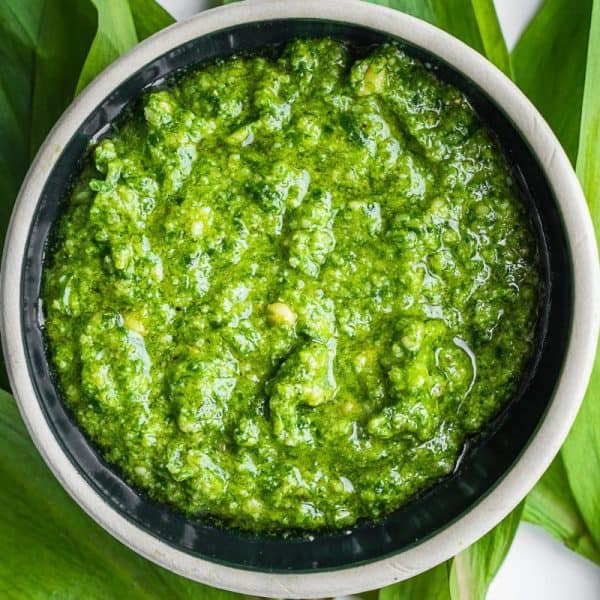
Ingredients
- 1 bunch Ramp leaves – about 20 or so leaves, roughly chopped
- ¼ cup Extra Virgin Olive Oil
- ¼ cup Pine nuts – Toasted preferrable
- ¼ cup Parmigiano Reggiano – Grated
- Salt and black pepper to taste
Instructions
- To the bowl of a food processor, add the ramp leaves, olive oil, pine nuts and Parmigiano Reggiano. Pulse until you reach your desired consistency. Don't over-process! You want some bite and texture for this pesto.
- Taste and adjust the seasoning to your liking.
Notes
Nutrition
Nutrition information is automatically calculated, so should only be used as an approximation.
 Like this recipe? Rate & comment below!
Like this recipe? Rate & comment below!